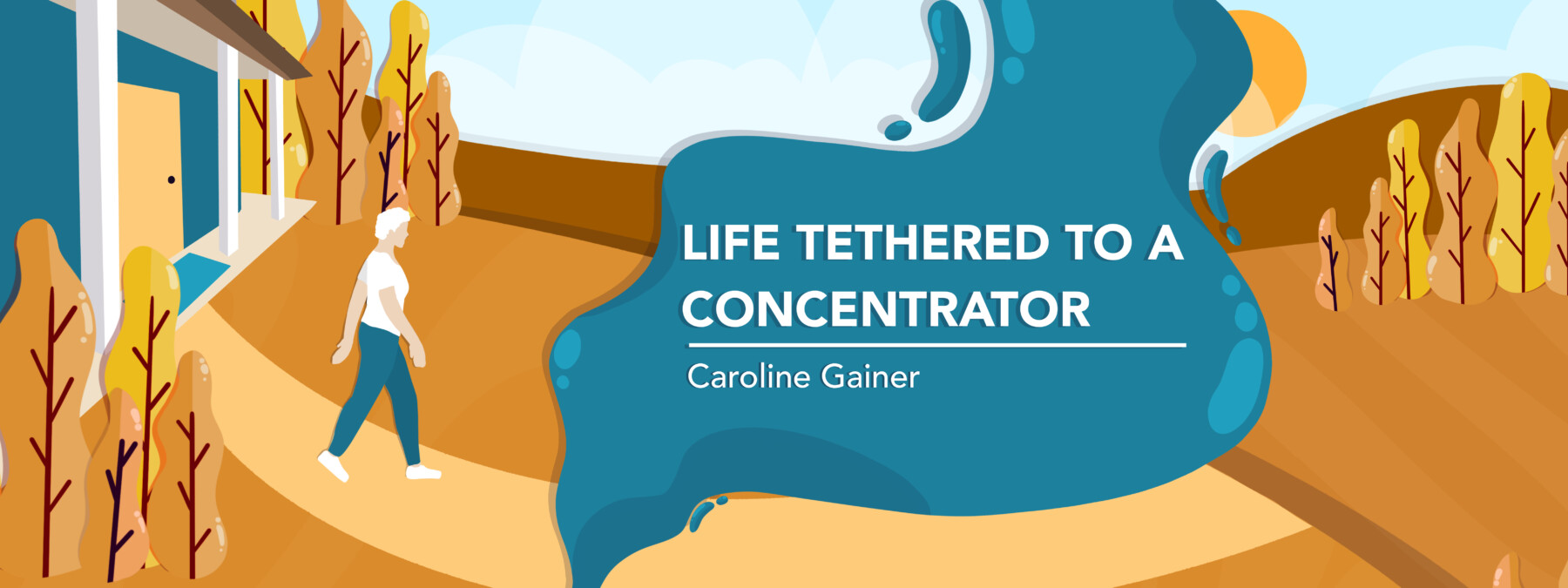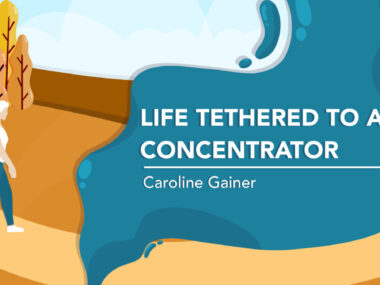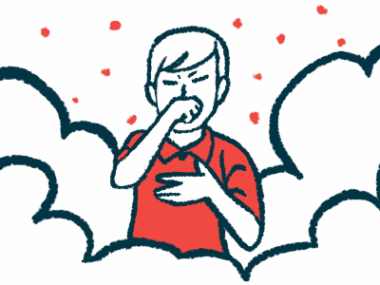Learning firsthand about the risk of shingles with COPD
COPD patients often have weakened immune systems that boost the risk
Written by |

“Gloom, despair, and agony on me …” The Moonshiner quartet sang it best on the country show “Hee Haw,” their voices twanging through the television like a knowing wink from the universe. I used to laugh at that line until chronic obstructive pulmonary disease (COPD) made it feel like a prophecy.
I already face breathlessness, fatigue, and the daily calculus of conserving energy. Then, five weeks ago, I developed shingles, despite being vaccinated. It felt like an ember had reignited from a childhood fire, flaring through my nerves with a pain that mocked my efforts to prevent it.
After I’d been experiencing immense pain for a while, I was actually relieved when a rash appeared, because I was afraid I’d severely injured my back. The pain radiated from my spine and continued all the way around my body to my sternum. Over a month later, I still have areas of my body that are scabbed over, and the pain persists.
A weakened defense
COPD obviously affects my lungs, but it also reshapes my immune system. Chronic inflammation, frequent corticosteroid use, and the general wear and tear of respiratory illness all contribute to the body’s weakened defense against latent viruses like varicella-zoster, the culprit behind shingles. Even with the Shingrix vaccine, which offers strong protection, people with COPD remain at an elevated risk. The vaccine reduces the likelihood and severity of shingles, but it’s not a guarantee, especially when the immune system is already compromised.
Studies suggest that COPD patients are more likely to experience shingles outbreaks than healthy people, which can worsen respiratory symptoms, increase fatigue, and trigger flares. It’s not just a skin rash; it’s a systemic assault that feels like betrayal after I’ve been doing everything correctly.
Shingles is not a new fire, but an old one, smoldering quietly in the ashes of childhood chickenpox. For most people, that ember remains buried. But for those of us with COPD, the wind can shift, igniting the ember.
Steroids, stress, and systemic inflammation behave like oxygen stirring the coals. And suddenly, something we thought had been extinguished flares up again, painful, persistent, and unrelenting.
The vaccine is like a fire blanket, not a firewall. It can reduce the risk and soften the blow, but it doesn’t guarantee immunity.
Yet, after the flare, there’s ash. And ash, as any gardener knows, can be nourishing. It is rich with the memory of heat, survival, what burned, and what endured.
Recovery from shingles is not just about cooling the pain; it’s about learning to tend the hearth differently. To recognize when the wind is picking up. To shield the coals. To rest when the body whispers, not just when it screams.
For those of us with COPD, this tending becomes a daily ritual. We learn which medications stir the embers, which boundaries protect the flame, which acts of care — such as gentle movement, deep sleep, and laughter — help the body rebuild its firebreaks.
And maybe we stop seeing ourselves as unlucky — not because the ember won’t reignite, but because we’ve learned how to meet it: with breath, wisdom, and a fireproof kind of grace.
Note: COPD News Today is strictly a news and information website about the disease. It does not provide medical advice, diagnosis, or treatment. This content is not intended to be a substitute for professional medical advice, diagnosis, or treatment. Always seek the advice of your physician or other qualified health provider with any questions you may have regarding a medical condition. Never disregard professional medical advice or delay in seeking it because of something you have read on this website. The opinions expressed in this column are not those of COPD News Today or its parent company, Bionews, and are intended to spark discussion about issues pertaining to chronic obstructive pulmonary disease.






Wanda Stevens
I'm sorry to hear you went through this awful thing. My sister-in-law went through it twice and we felt so bad for her. I pray it doesn't come knocking on my door. Your account of this unholy terror was quite poetic. Take care now.
Thomas Krueger
Love your posts Caroline. They all hit close to home.
David A Sylvester
Get completely well--I know you will Caroline Your example will help folks struggling with issues other than our COPD
Jim V.
Thank you for your post Caroline. I kept putting off getting the shingles vaccine until, you guessed it, I got a case on my neck. First it felt like I was being pricked by a bunch of hot needles then the rash broke out and it felt like my skin was on fire. I urge everyone to get the vaccine because it is no picnic!
joe burke
I have COPD (sever emphysema per my pulmo dr.). Treating it for 10 years from Advair to Trelegy in past 2 years. Should I bother to get the Shingles vaccine ? I did have chicken pox as a 10 yr old
David A Sylvester
Joe Burke. Ask your doctor--